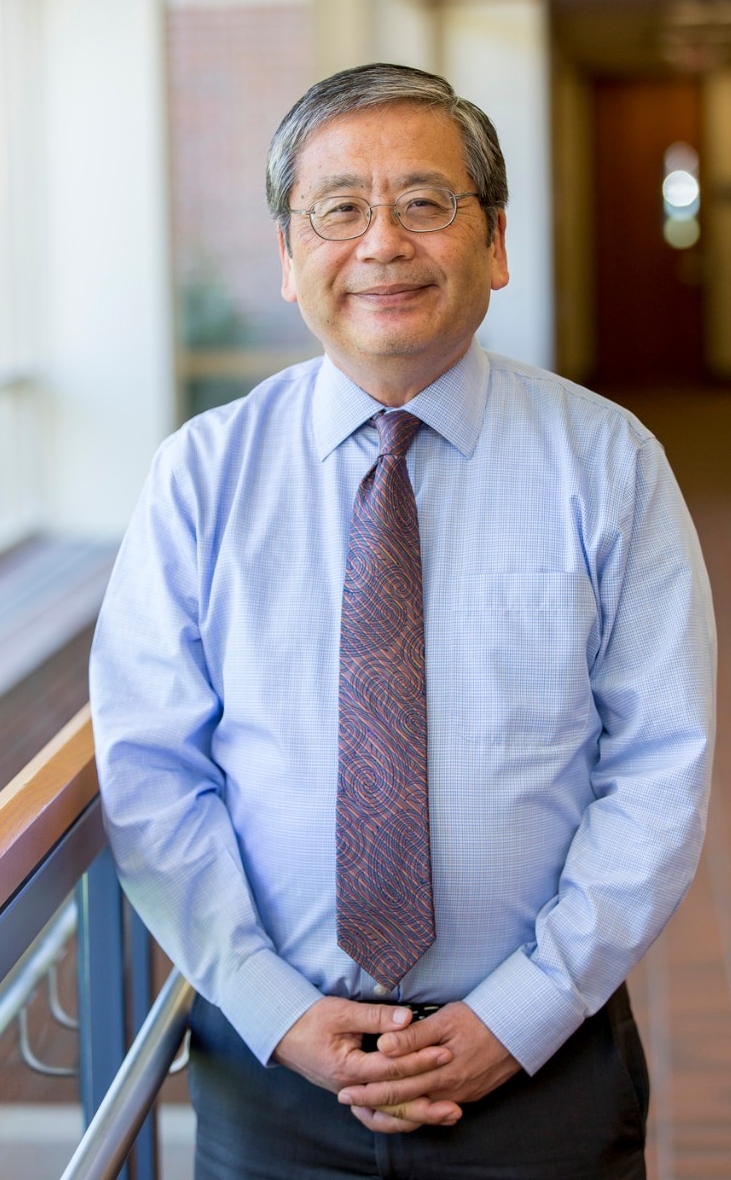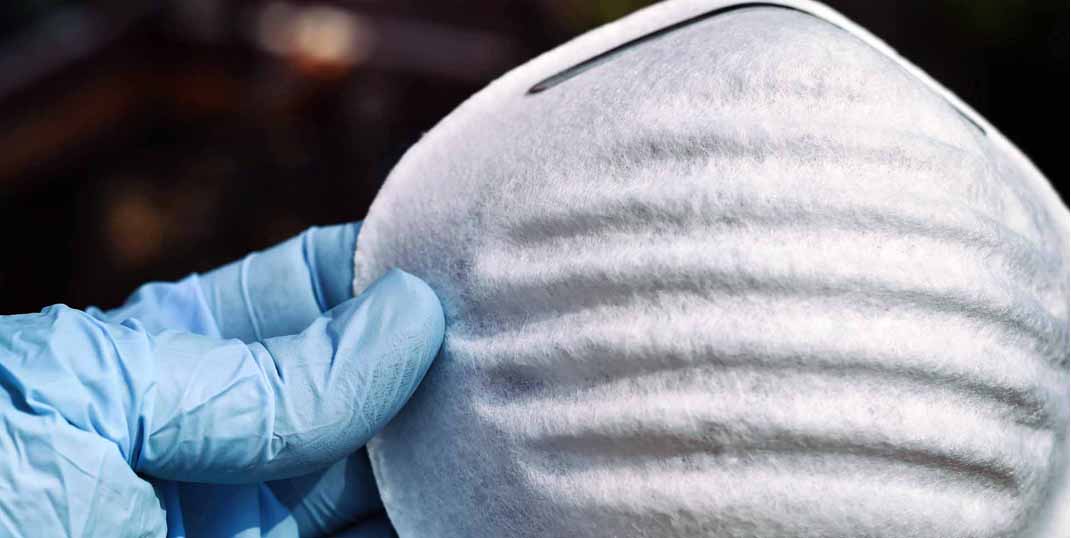The sputtering roll-out of vaccines to combat the spread of COVID-19, combined with new, more contagious strains of the coronavirus, have placed a renewed focus on mask wearing. Boston College Associate Professor of Law Dean Hashimoto, M.D., says evidence from the first year of the pandemic points to masks and their use as one of the surest ways to limit transmission of the virus.
Hashimoto’s new book, The Case for Masks: Science-Based Advice for Living During the Coronavirus Pandemic, examines the earliest science to emerge on mask wearing during the pandemic, which has so far claimed more than 500,000 lives in the U.S.
With that science, Hashimoto makes a compelling argument for the benefits of masking, a seemingly straightforward solution that quickly became tangled in political leaning, complaints over religious and personal liberty, as well as conflicting reports in mainstream and social media about the benefits and risks of face coverings.

Dean Hashimoto (Caitlin Cunningham)
“Fundamentally, it is a public health need,” said Hashimoto, who is also the chief medical officer and leader of the Workplace Health and Wellness Division at Mass General Brigham, the largest health care provider in Massachusetts. “Masking is misunderstood by an important segment of the population: those resistant to masking. Most people don’t have a basic understanding as to why wearing a mask is important.”
In part, a lot of attention has gone to other aspects of the pandemic.
“It’s not very sexy,” said Hashimoto. “Masking has not received the same amount of attention as vaccinations or drug therapies. But if you look at the data, they are very impressive about the positive, beneficial impact that masking has.”
Hashimoto learned firsthand about the benefits of masking as Mass General Brigham responded to the massive public health crisis. With 75,000 employees, the hospital group saw an “immediate and remarkable” decline in infection rates after requiring universal masking with surgical masks for employees and patients, according to findings published in the Journal of the American Medical Association.
When his book was first published in October, even some of his medical colleagues questioned his contention that masks were more important than vaccines to end the pandemic. President Biden’s endorsement of mask wearing and policy changes designed to encourage their use are welcome turnabouts, Hashimoto said.
“It is becoming clear that while the vaccination campaign is important, we need to emphasize masking if we hope to maximize the impact of vaccinations,” said Hashimoto.
Other examples Hashimoto cites include the impact of gatherings where no one wore a mask. A choir practice in Washington state last March resulted in 52 of the 61 participants testing positive for COVID-19 or showing signs of the illness.
On the other hand, at a hair salon in Springfield, Mo., two stylists with COVID-19 symptoms continued to work for nearly two weeks, serving 139 clients before testing positive. But because they wore masks—required by local rules and company regulations mandating masks for employees and clients—none of their clients developed symptoms or tested positive.
“ Vaccines are not necessarily the silver bullet to this pandemic. Masking remains essential to controlling and managing the spread of disease. ”
Mathematical modeling shows that relying on the vaccine alone will require 80 percent of the country—or more than 260 million people—to be vaccinated before bringing the virus under control, Hashimoto said. But universal mask wearing—with roughly 85-90 percent compliance—would require vaccinating only about half of the population, which Hashimoto sees as a very achievable goal.
“The emergence of new highly infective strains increases the possibility that COVID-19 will become endemic and continue for a while,” Hashimoto said. “Vaccines are not necessarily the silver bullet to this pandemic. Masking remains essential to controlling and managing the spread of disease.”
As lawmakers debate the next steps in funding both public health and economic relief measures, Hashimoto argues funding should also be assigned to research and development for improved mask design and technology, scientific studies, and a set of approved standards that would allow consumers to better evaluate mask products to suit their needs. He said the current shift toward wearing two masks underscores the need for research and development to manufacture highly effective, comfortable single masks that will encourage greater use.
“It’s not clear that double masking has a lot of practical value because it decreases breathability and comfort and affects mask usage,” said Hashimoto. “Using a well-fitted cotton double-layered mask still is known to be reasonably effective. We need new mask technology rather than relying on double masking. The future turning point will be if we can develop a more breathable mask with a high filtering capacity. We could have already developed this technology if we had decided earlier to invest a tiny fraction of the hundreds of billions of dollars that we spent on vaccine development.”
Hashimoto says that the estimated 20 to 30 percent of Americans who strongly disagree with masking should be treated with respect and provided additional information about the documented benefits of masking through advertising and public service messages.
“I advocate a very conciliatory approach with that 20 to 30 percent,” said Hashimoto. “The mistake is making it political. There’s a lot of shaming on social media, which is what you don’t want to do. We don’t do that with other public health initiatives. We need to begin by being empathetic and understanding the reasons why they are against it.”
He suggests several steps to increase mask-wearing:
•Make masks readily and freely available, especially in underserved communities
•Develop better, more comfortable masks
•Create incentives for mask use, such as opportunities to gather with proper masks and social distancing
•Get the facts out by delivering empathetic, science-based information and messaging
•Redouble outreach to populations that are at-risk for the virus, or resistant to mask wearing.
Ed Hayward | University Communications | February 2021




